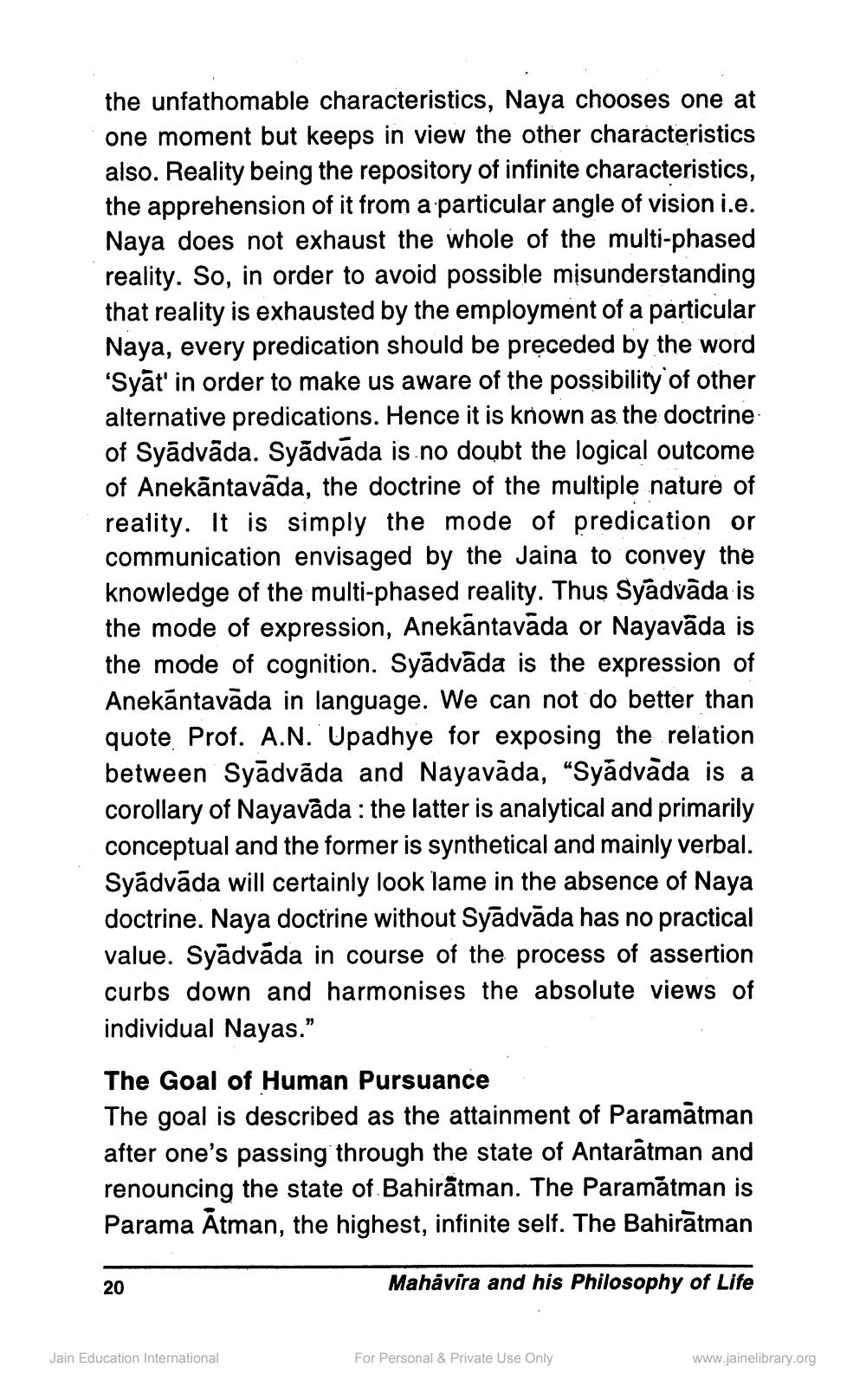________________
the unfathomable characteristics, Naya chooses one at one moment but keeps in view the other characteristics also. Reality being the repository of infinite characteristics, the apprehension of it from a particular angle of vision i.e. Naya does not exhaust the whole of the multi-phased reality. So, in order to avoid possible misunderstanding that reality is exhausted by the employment of a particular Naya, every predication should be preceded by the word 'Syāt' in order to make us aware of the possibility of other alternative predications. Hence it is known as the doctrine of Syādvāda. Syādvāda is no doubt the logical outcome of Anekāntavāda, the doctrine of the multiple nature of reality. It is simply the mode of predication or communication envisaged by the Jaina to convey the knowledge of the multi-phased reality. Thus Syadvāda is the mode of expression, Anekāntavāda or Nayavāda is the mode of cognition. Syadvāda is the expression of Anekantavāda in language. We can not do better than quote Prof. A.N. Upadhye for exposing the relation between Syādvāda and Nayavāda, “Syādvāda is a corollary of Nayavāda : the latter is analytical and primarily conceptual and the former is synthetical and mainly verbal. Syadvāda will certainly look lame in the absence of Naya doctrine. Naya doctrine without Syādvāda has no practical value. Syādvāda in course of the process of assertion curbs down and harmonises the absolute views of individual Nayas."
The Goal of Human Pursuance The goal is described as the attainment of Paramātman after one's passing through the state of Antarātman and renouncing the state of Bahirātman. The Paramātman is Parama Atman, the highest, infinite self. The Bahirātman
Mahavira and his Philosophy of Life
Jain Education International
For Personal & Private Use Only
www.jainelibrary.org




